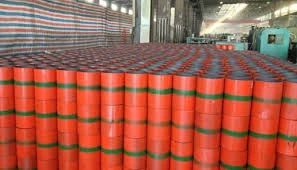Understanding the Role of Casing Pup Joints in Oil and Gas Operations
The Importance of Casing Pup Joints in Oil and Gas Operations
In the oil and gas industry, the integrity and efficiency of drilling operations are paramount. One essential component that plays a crucial role in these operations is the casing pup joint. While often overlooked, casing pup joints are vital in ensuring the structural integrity of wells and facilitating various functions during drilling and completion.
What is a Casing Pup Joint?
A casing pup joint is a short length of pipe that is used in conjunction with casing strings to compensate for the required lengths in a drilling operation. These joints are typically available in various diameters and wall thicknesses, tailored to meet specific operational needs. They are instrumental when the length of casing needed does not meet standard pipe sizes, or when adjustments in pipeline length during installation are necessary.
Applications of Casing Pup Joints
1. Adjusting Lengths Casing pup joints provide flexibility in drilling operations. By allowing for precise length adjustments, they ensure that the casing reaches the desired depth and matches the formations being targeted. This flexibility is essential in multi-stage completions or when returning to previously drilled wells.
2. Facilitating Well Integrity The integrity of the wellbore is critical for safety and productivity. Casing pup joints help maintain the well structure, preventing collapse and ensuring that hydrocarbon zones are adequately sealed off from freshwater aquifers. This function is vital in protecting environmental resources and ensuring compliance with regulatory standards.
3. Enhancing Performance During Drilling During drilling operations, operators might encounter various geological formations that require specific casing designs. Casing pup joints allow for adjustments that can enhance drilling performance and efficiency, helping to reduce non-productive time and costs.
casing pup joint

4. Connection to Other Equipment Casing pup joints can also serve as connectors to various pieces of equipment, including wellhead assemblies, control systems, and other casing strings. Their adaptability in design allows them to fit various components of the drilling system seamlessly.
Material and Design Considerations
Casing pup joints are typically manufactured from high-strength steel to withstand the harsh conditions of the oil and gas environment. The choice of material is crucial as it determines the joint's ability to handle stresses, pressures, and corrosion. Moreover, the thread design on pup joints needs to be compatible with the connecting casing or equipment to ensure proper sealing and integrity during operations.
Challenges in Usage
Despite their importance, there are challenges associated with the use of casing pup joints. Improper installation can lead to issues such as leaks or structural failures. Furthermore, the variability in the quality of materials and manufacturing can impact their performance. Therefore, rigorous quality control measures and industry standards are essential when selecting and using casing pup joints.
Conclusion
Casing pup joints may seem like minor components within the intricate framework of oil and gas drilling systems, but their significance cannot be understated. They play a crucial role in ensuring the safety, efficiency, and effectiveness of drilling operations. As the industry continues to evolve, with advancements in technology and increased regulatory demands, the importance of well-chosen and properly installed casing pup joints will only grow. Ensuring the right specifications, superior material quality, and proper installation practices will ultimately enhance operational performance and contribute to sustainable resource extraction in the oil and gas sector.
In summary, as operators face more challenging drilling environments and strive for greater efficiency, casing pup joints will remain a fundamental part of achieving success in the field.
-
Unlock the Benefits of Pup Joints for Your OperationsNewsOct.31,2024
-
The Quality of Casing Couplings from ChinaNewsOct.31,2024
-
The Essential Role of Pup Joints in Drilling OperationsNewsOct.31,2024
-
The Benefits of Tubing Couplings for Your ProjectsNewsOct.31,2024
-
Enhance Your Drilling Operations with Tubing Pup JointsNewsOct.31,2024
-
Elevate Your Drilling Operations with Tubing CrossoversNewsOct.31,2024







